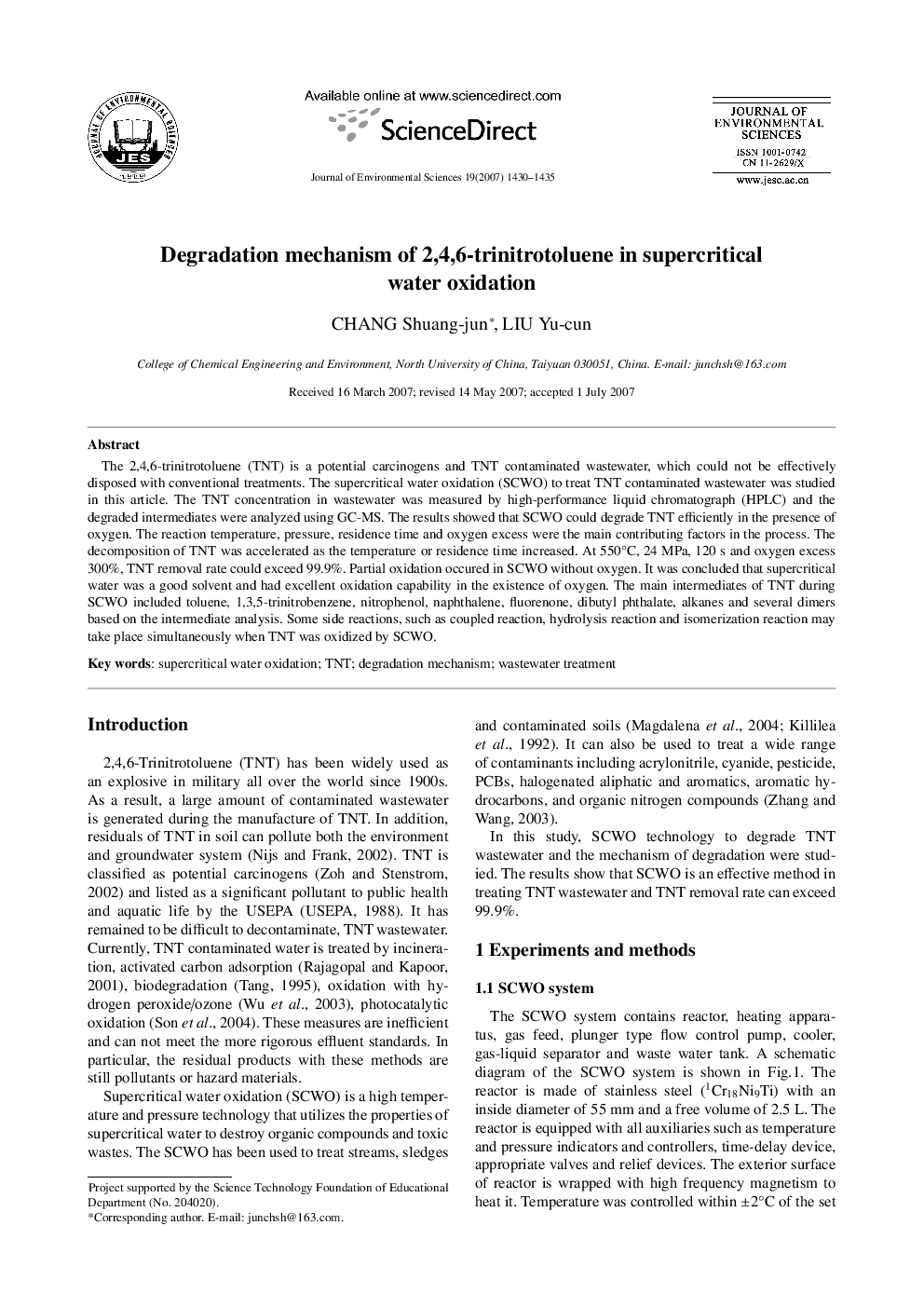| کد مقاله | کد نشریه | سال انتشار | مقاله انگلیسی | نسخه تمام متن |
|---|---|---|---|---|
| 4456590 | 1312562 | 2007 | 6 صفحه PDF | دانلود رایگان |

The 2,4,6-trinitrotoluene (TNT) is a potential carcinogens and TNT contaminated wastewater, which could not be effectively disposed with conventional treatments. The supercritical water oxidation (SCWO) to treat TNT contaminated wastewater was studied in this article. The TNT concentration in wastewater was measured by high-performance liquid chromatograph (HPLC) and the degraded intermediates were analyzed using GC-MS. The results showed that SCWO could degrade TNT efficiently in the presence of oxygen. The reaction temperature, pressure, residence time and oxygen excess were the main contributing factors in the process. The decomposition of TNT was accelerated as the temperature or residence time increased. At 550°C, 24 MPa, 120 s and oxygen excess 300%, TNT removal rate could exceed 99.9%. Partial oxidation occured in SCWO without oxygen. It was concluded that supercritical water was a good solvent and had excellent oxidation capability in the existence of oxygen. The main intermediates of TNT during SCWO included toluene, 1,3,5-trinitrobenzene, nitrophenol, naphthalene, fluorenone, dibutyl phthalate, alkanes and several dimers based on the intermediate analysis. Some side reactions, such as coupled reaction, hydrolysis reaction and isomerization reaction may take place simultaneously when TNT was oxidized by SCWO.
Journal: Journal of Environmental Sciences - Volume 19, Issue 12, 2007, Pages 1430-1435